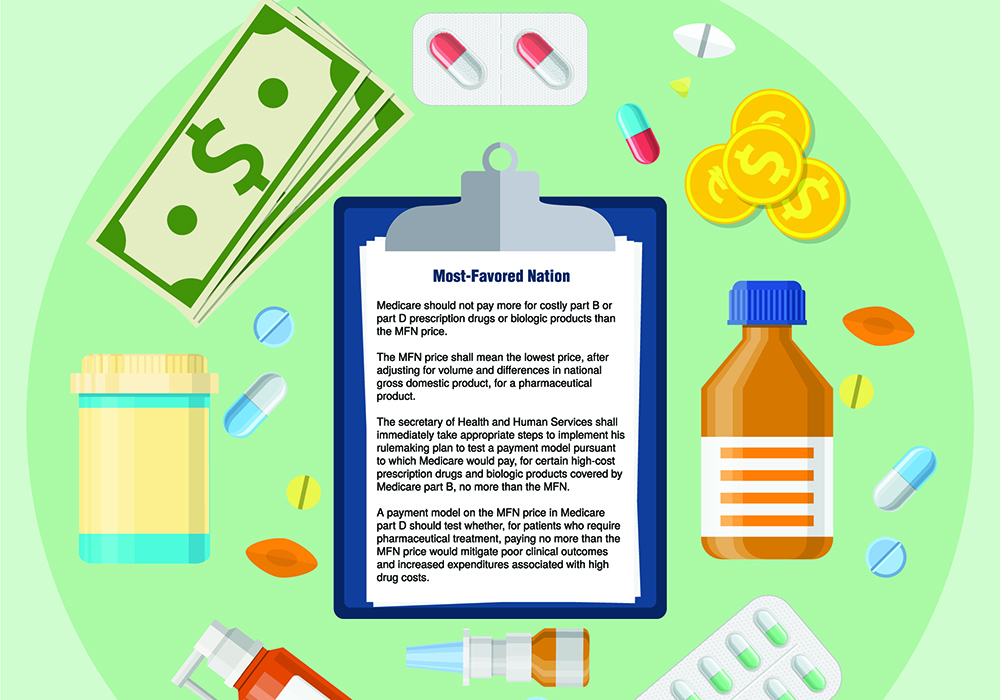From Teddy Roosevelt to JFK, presidents throughout history have sent legislation to Capitol Hill with the intent to expand healthcare coverage to more Americans. Finally, when Lyndon B. Johnson drafted a bill and pushed it through Congress by expanding sections of the Social Security Act, Medicare become an entitlement and is now implemented by the Centers for Medicare and Medicaid Services (CMS). During the past 50 years, federal health coverage has grown to include Medicaid, maternal and childcare assistance, public health programs, and prescription medication pricing.
Paying for Prescriptions
Drug accessibility and affordability have been top political issues across the ideologic spectrum. Prescription medications are increasing, particularly for chronic diseases, and it’s the number-one issue identified in public opinion surveys. In 2020, Kaiser Family Foundation reported that 79% of Americans say drug prices are unreasonable, 88% think that the government should make generic medication more accessible and that it should be allowed to negotiate with the pharmaceutical industry for lower prices for Medicare, 76% believe that importing drugs from other countries will make medications more affordable, and 63% think that more federal regulation on drug pricing is needed. In contrast, 59% said that advancements in medication have made their lives better.
Politicians have taken note and proposed a number of policies in an attempt to lower the out-of-pocket costs for consumers. Both Trump and Biden made Medicare negotiation for lower drug prices a campaign pledge. Biden declared, “Medicare covers so many Americans, and it has significant leverage to negotiate lower prices for its beneficiaries. Repeal the existing law explicitly barring Medicare from negotiating lower prices with drug corporations.” Similarly, Trump issued an executive order on September 13, 2020, Lowering Drug Prices by Putting America First, which designated the United States to purchase drugs at the lowest international price, a policy referred to as the Most-Favored Nation (MFN).
What MFN Means for Drug Pricing
The executive order explicitly states:
- Medicare should not pay more for costly part B or part D prescription drugs or biologic products than the MFN price.
- The MFN price should mean the lowest price, after adjusting for volume and differences in national gross domestic product, for a pharmaceutical product.
- The secretary of Health and Human Services should immediately take appropriate steps to implement his rulemaking plan to test a payment model pursuant to which Medicare would pay, for certain high-cost prescription drugs and biologic products covered by Medicare part B, no more than the MFN.
- A payment model on the MFN price in Medicare part D should test whether, for patients who require pharmaceutical treatment, paying no more than the MFN price would mitigate poor clinical outcomes and increased expenditures associated with high drug costs.
CMS implemented the MFN on November 20, 2020, and although it will receive comments through January 26, 2021, a pilot program in all states began on January 1, 2021, and will run through 2027. The program began with the 50 part B drugs with the highest percentage of Medicare spending.
Although it appears to support bipartisan priorities to lower patient costs for prescription medications, provider groups and patient advocacy organizations are concerned that the model will shift costs and change the current dynamic, which uses the average sales price plus 6% to prescribing physicians, to an MFN price with a flat rate for at least 50 lifesaving drugs. Additionally, providers and patients have concerns about reduced access to specific drugs.
The MFN does make some exceptions, including:
- Children’s hospitals
- Prospective Payment System-exempt cancer hospitals
- Critical access hospitals
- Indian Health Service
- Rural health clinics
In a statement urging CMS to withdraw the MFN, the Association of Clinical Oncology board chair said:
“In fact, the MFN interim final rule acknowledges that ‘a portion of the savings is attributable to beneficiaries not accessing their drugs through the Medicare benefit, along with the associated lost utilization.’ Patients with cancer require timely access to potentially lifesaving treatment, and limited and specific treatment options are often indicated. That the rule plans for and achieves part of its savings by limiting or restricting access to care for nearly one in five patients is unconscionable and unacceptable.”
ONS Perspective
For oncology nurses, any federal government change that has the potential to increase patient barriers is an issue, and ONS shared that perspective with CMS. Additionally, ONS joined with the healthcare community to raise concerns about access to medications for patients with cancer. As the administrations change, the MFN’s rollout may pause and provide an opportunity to review CMS’s process.
Drug pricing for prescription medicine is a complicated and vast aspect of the most pressing matter in health care, and nurses must raise their voice in promoting affordable care.






